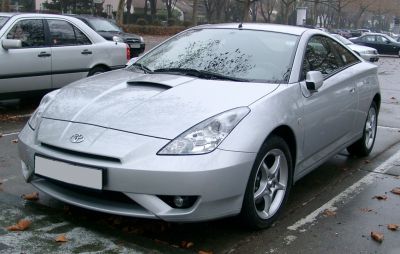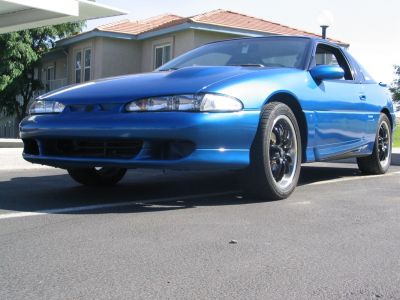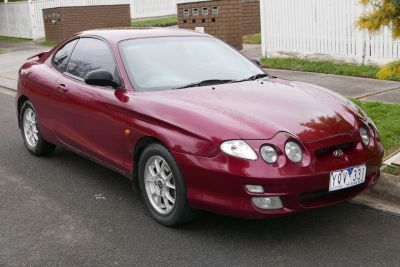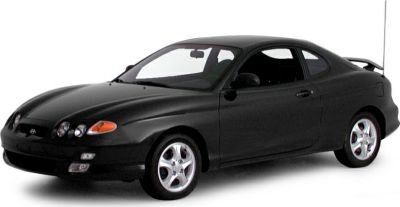 1986 Mazda RX 7 II (FC) Dimensions, Size & Specs
1986 Mazda RX 7 II (FC) Dimensions, Size & SpecsMeasurements of the 1986 Mazda RX 7 II, engineered for optimal performance and comfort
| Dimensions | |
|---|---|
| Length: | 4310 mm169.7 in14.1 ft |
| Width: | 1690 mm66.5 in5.5 ft |
| Height: | 1265 mm49.8 in4.2 ft |
| Trunk Capacity: | 200 liter7.1 cu ft |
| Weight Specifications | |
| Curb Weight: | 1250 kg2756 lbs |
| Maximal permitted Weight: | 1705 kg3759 lbs |
| Roof Load: | 50 kg110 lbs |
| Tire Specifications | |
| Rims Size: | 16-inch rims:
|
| Tire Size: |
|
The Mazda RX-7 II (FC), produced from 1985 to 1991, represents a significant evolution of the iconic RX-7 sports coupe. As a second-generation model, this car combines sleek design with a compact and lightweight structure that emphasizes agility and driving pleasure. The RX-7 II measures 4310 mm (169.7 inches) in length, providing a balanced footprint ideal for dynamic handling in both urban and spirited driving scenarios. Its width spans 1690 mm (66.5 inches), allowing for a stable stance on the road, while the low height of 1265 mm (49.8 inches) contributes to its aerodynamic profile and sporty appearance.
Weighing in at a curb weight of approximately 1250 kg (2756 lbs), the RX-7 II remains relatively light for a coupe of its era, supporting its rotary engine's performance by effectively delivering power to the road without excess mass. The maximum allowed weight is 1705 kg (3759 lbs), ensuring safe loading conditions. Storage is modest but practical, featuring a luggage capacity of 200 liters (7.1 cubic feet), typical for sports coupes where emphasis is placed more on performance than cargo space. The vehicle supports roof loads up to 50 kg (110 lbs), which adds some versatility for carrying extra gear.
The FC generation rides on 16-inch rims sized 7J x 16, fitted with 205/55 R16 tires that strike a good balance between grip, comfort, and responsiveness. These specifications highlight Mazda’s commitment to a sport-focused driving experience with precise handling. The RX-7 II's compact and lightweight design, combined with its rotary engine legacy, make it a standout in the sports car world of the late 1980s, maintaining strong appeal among enthusiasts and collectors today. Overall, this generation of RX-7 continues to be celebrated for its blend of style, size, and driving dynamics.
Discover the standout features that make the 1986 Mazda RX 7 II a leader in its class
Have a question? Please check our knowledgebase first.
The Mazda RX-7 II (FC), produced from 1985 to 1991, measures 4310 mm (169.7 inches) in length, 1690 mm (66.5 inches) in width, and 1265 mm (49.8 inches) in height. These compact yet sleek dimensions contributed to its reputation as a nimble sports coupe with a low profile, enhancing both aerodynamic performance and aesthetic appeal. Its relatively modest width and height compared to other sports cars of its era enabled agile handling on winding roads while providing a low center of gravity for improved cornering stability.
The Mazda RX-7 II (FC) has a curb weight of approximately 1250 kg (about 2,755 lbs), which represents the weight of the vehicle without passengers or cargo but including all necessary operating consumables. The maximum weight, which includes the vehicle's maximum load capacity when fully occupied and loaded, is 1705 kg (around 3,759 lbs). This weight balance contributes to the RX-7's sporty performance characteristics, allowing it to maintain agility while accommodating passengers and limited cargo.
The Mazda RX-7 II (FC) offers a luggage capacity of 200 liters (approximately 7.1 cubic feet). While not extensive compared to larger cars, this capacity is reasonable for a sports coupe from its era, providing enough space for everyday essentials such as groceries, small bags, or a weekend's worth of travel items. However, due to its design focus on performance and style, the RX-7 prioritizes driving dynamics over cargo space, which means larger items may require folding seats or alternative storage solutions.
This generation of the Mazda RX-7 is equipped with rims sized 7J x 16 (16-inch diameter and 7-inch width), paired with 205/55 R16 tires. These relatively wide and low-profile tires provide a good balance of grip, responsiveness, and ride comfort, enhancing the car's sporty handling characteristics. The 16-inch wheels were typical for a sports coupe of its time, offering improved cornering performance and stability at higher speeds without compromising ride quality excessively.
Yes, the Mazda RX-7 II (FC) will fit comfortably into a standard residential garage. Given its dimensions—4310 mm (169.7 inches) in length, 1690 mm (66.5 inches) in width, and 1265 mm (49.8 inches) in height—the RX-7 is smaller than many modern vehicles and far from the maximum width or height restrictions in typical garage spaces. Most standard single-car garages provide at least 2440 mm (96 inches) of width and 4877 mm (192 inches) of length, making parking the RX-7 convenient while allowing some clearance on all sides.
Compared to its predecessor, the RX-7 SA/FB (first generation), the RX-7 II (FC) is generally larger and heavier. The earlier SA/FB typically measured about 4195 mm (165.2 inches) in length and 1670 mm (65.7 inches) in width, making the FC slightly longer and wider at 4310 mm by 1690 mm. This increase in size allowed for greater interior comfort and improved aerodynamics. The FC also had a lower profile height of 1265 mm compared to the earlier model, contributing to better handling. Weight-wise, the FC was heavier due to added features and chassis reinforcements but still maintained sporty dynamics.
The Mazda RX-7 II (FC) measures 1690 mm (66.5 inches) in width and 1265 mm (49.8 inches) in height, quite typical for compact sports coupes from the late 1980s. Compared to contemporaries like the Nissan 300ZX, which had a width around 1760 mm (69.3 inches) and height of 1270 mm (50 inches), the RX-7 is narrower and slightly lower, emphasizing a sleek and agile profile. This smaller footprint made it more nimble, complicating wider stance vehicles' handling dynamics while maintaining competitive aerodynamic performance and visibility.
The Mazda RX-7 II (FC) has a roof load capacity of 50 kg (approximately 110 lbs). This means it can support moderate roof-mounted accessories such as lightweight luggage carriers, roof boxes, or bike racks designed within this weight limit. However, due to its low height and coupe design, the practicality of roof accessories might be limited compared to SUVs or hatchbacks. Care should be taken to ensure that mounted accessories do not negatively affect the vehicle's aerodynamics or handling, especially at higher speeds.
When compared to similar sports coupes from the 1980s and early 1990s—such as the Toyota Supra Mk3, Nissan 300ZX Z31, and Mitsubishi Starion—the Mazda RX-7 II (FC) stands out for its slightly more compact width (1690 mm or 66.5 inches) and lower height (1265 mm or 49.8 inches). The length is also competitive at 4310 mm (169.7 inches). This smaller overall footprint contributes to its renowned agility and sharp handling, while competitors often offered more interior space or power but with increased size and weight. The RX-7 II strikes a balance, appealing to enthusiasts who value driving dynamics and nimbleness over sheer size or muscle.
While the Mazda RX-7 II (FC) is primarily a performance-oriented sports coupe, it offers reasonable practicality for daily driving within its compact size. Its 200-liter luggage capacity allows for basic cargo needs, and the interior seating comfortably accommodates two passengers with a sporty driving position. The car's relatively low curb weight (1250 kg or 2,755 lbs) helps with fuel efficiency and responsiveness. However, its small trunk space and limited rear visibility, common in sports coupes, can pose challenges for frequent errands or larger cargo. It’s a better fit for enthusiasts who prioritize driving experience over maximum daily practicality.
Discover similar sized cars.

| Production: | 1999-2006 |
|---|---|
| Model Year: | 2000 |
| Length: | 4328-4335 mm170.4-170.7 in |
| Width: | 1735 mm68.3 in |
| Height: | 1305-1320 mm51.4-52.0 in |

| Production: | 1992-1998 |
|---|---|
| Model Year: | 1990 |
| Length: | 4374 mm172.2 in |
| Width: | 1735 mm68.3 in |
| Height: | 1295 mm51.0 in |

| Production: | 1997-2001 |
|---|---|
| Model Year: | 1997 |
| Length: | 4345 mm171.1 in |
| Width: | 1730 mm68.1 in |
| Height: | 1310 mm51.6 in |

| Production: | 1999-2002 |
|---|---|
| Model Year: | 1999 |
| Length: | 4345 mm171.1 in |
| Width: | 1730 mm68.1 in |
| Height: | 1310 mm51.6 in |

| Production: | 1996-1999 |
|---|---|
| Model Year: | 1996 |
| Length: | 4345 mm171.1 in |
| Width: | 1730 mm68.1 in |
| Height: | 1310 mm51.6 in |

| Model Year: | 1998 |
|---|---|
| Length: | 4345 mm171.1 in |
| Width: | 1730 mm68.1 in |
| Height: | 1310 mm51.6 in |
